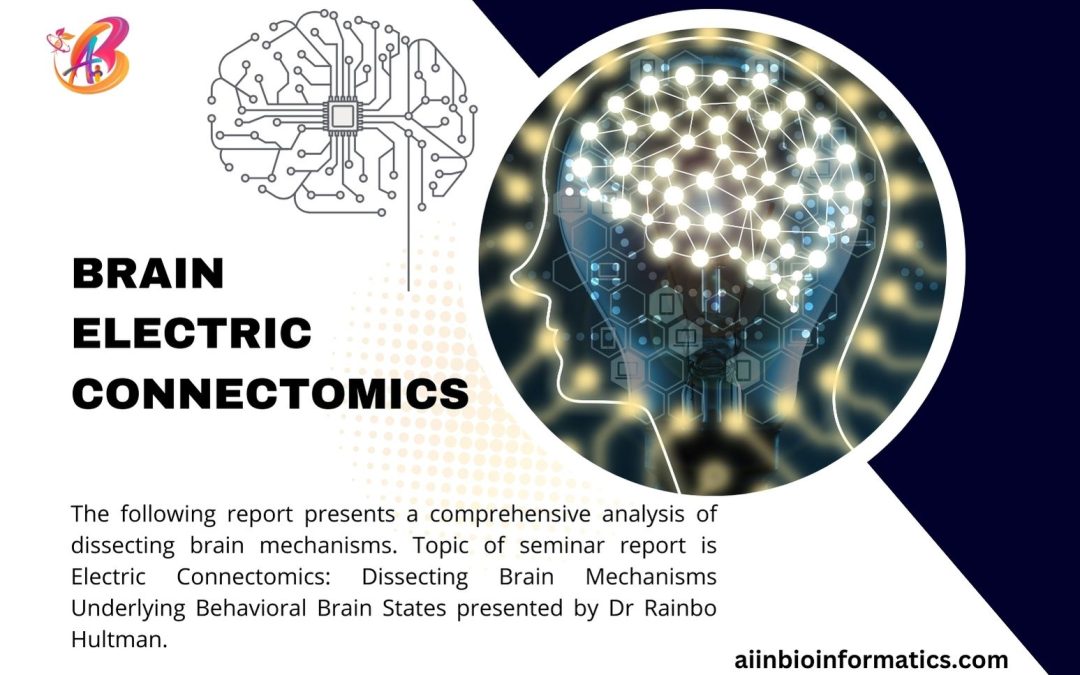Title of the Seminar: Electric Connectomics: Dissecting Brain Mechanisms Underlying Behavioral Brain States
Date: 10/26/2023
Local Host: Indiana University School of Medicine
Seminar Series: SNRI Seminar Series
Presenter: Dr. Rainbo Hultman, Ph.D.
Reported by: Swaraj Thorat
The following report presents a comprehensive analysis of dissecting brain mechanisms. Topic of seminar report is Electric Connectomics: Dissecting Brain Mechanisms Underlying Behavioral Brain States presented by Dr Rainbo Hultman. She is known for her research in brain connectivity and psychiatric disorders. She earned her Ph.D. from Duke University. This report delves into the realm of electric connectomics, machine learning model, gene expression and its significance and upcoming migraine research.
Introduction
Understanding the complex working of brain networks and their involvement in emotional and stress phase is crucial understanding in neuroscience. Report delves into studying brain-wide networks and electrical connectivity patterns that is electric connectomics. We investigate how these networks can be useful harnessed to identify vulnerability to stress in rodents.
Electric Connectomics and Brain Network Dynamics
Electric connectomes is a study of Brain’s intricate network of electrical connections. Having a good understanding of brain’s neural network is crucial for unraveling the mechanisms behind various brain function and behavioral states. Rodent models are used to study the neural mechanisms underlying resilience and stress vulnerability.
In this experiment, a C57 mouse was exposed to a CD1 mouse for 10 days. After separation, the mice exhibited stress susceptibility characterized by long-term impairments in social experiments. The mice lost interest in rewarding experiences. On the other hand, 40-50% of the mice showed resilience and displayed no stress symptoms. Researchers study and differentiate these resilient and susceptible groups in order to better understand the mechanism that underlie stress response.
Machine Learning Model
They built a machine learning model called Discriminatory Cross-spectral Factor Analysis. This model does two things, firstly, it learns which features of the data change together over time, so it’s like gathering natural network data. Secondly, t uses this information to predict whether the animals are stressed and resilient. This model learns to identify the feature which is more important to predict the different states of the animals.
The electome factor is a latent state that reflects electrical brain activity and the formation of neural networks. Machine learning model plays essential role to identify six electome factors. Four of these factors performed very well. They were able to predict condition such as social behavior, resilience, and stress. Dr Rainbo interested in pre-stress network as she believes that it may be helpful to predict which animal are vulnerable to stress related disorder.
Unveiling Genes
To get depth knowledge of gene expression, stratify animal into low and high vulnerability group based on their risk of developing condition. Then they dissected the prefrontal cortex and examined the gene expression differences. They found genes related to mitochondrial and metabolic activity are associated with stress vulnerability, on the other hand synaptic function related gene are associated with stress resilience.
High electome factor activity gene were more active in animals more likely to be linked to human disease such as bipolar disorder, depressive disorder, and schizophrenia. This suggest that electome factor is relevant to human disease. The research is under process and in future will get more clarity on results.
What’s Next
Dr. Rainbo discuss an innovative rodent based approach for studying migraines in her upcoming project. The aim is to study different neural networks involved in migraines, which will allow researchers to better understand neural circuits and help treat different disorders. Migraine is one of the complex disorders that affects 12% of the population. The exact cause for Migraine is unknown, however researchers are thought that it involves both the peripheral and central nervous systems.
Current animal models are limited to migraine study and has not captured all area of disorder, However Dr. Rainbo’s approach of using implanted electrodes to capture brain activity seems promising. The aim is not only to target single region but to capture multiple regions simultaneously. Further she discussed the how migraine and depression are often linked together may share some same causes. In order to study these possible connections speaker included electome factor sites for depression in their electrode design.
Conclusion
This report provides comprehensive and insightful analysis of neural mechanisms underlying behavioral brain states. Her research proves electome factor are powerful tool for understanding the complex dynamics of brain. This could be helpful in developing new and more successful treatments for stress-related disorders in humans. It is also interesting to see new developments in migraine research. Applying electome factors to migraine would be interesting.

